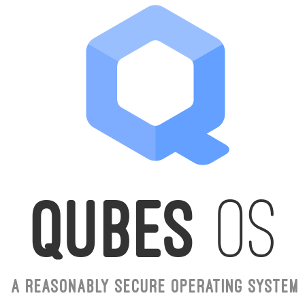Tag: security
OnionShare 2.5 fixes security issues and adds censorship circumvention features
The OnionShare team has just released OnionShare 2.5! This version fixes security vulnerabilities uncovered in our first comprehensive security audit, and also includes improved censorship circumvention features. Download it from onionshare.org.
OnionShare 2 adds anonymous dropboxes, supports new Tor addresses, and is translated into a dozen new languages
After nearly a year of work from a growing community of developers, designers, and translators, I'm excited that OnionShare 2 is finally ready. You can download it from onionshare.org.
OnionShare is an open source tool for securely and anonymously sending and receiving files using Tor onion services. It works by starting a web server directly on your computer and making it accessible as an unguessable Tor web address that others can load in Tor Browser to download files from you, or upload files to you. It doesn't require setting up a separate server, using a third party file-sharing service, or even logging into an account.
Backdoored Linux Mint, and the Perils of Checksums
Someone hacked the website of Linux Mint — which, according to Wikipedia’s traffic analysis report is the 3rd most popular desktop Linux distribution after Ubuntu and Fedora — and replaced links to ISO downloads with a backdoored version of the operating system. This blog post explains the situation.
Hardening Debian for the Desktop Using Grsecurity
I recently built a desktop system that I think is reasonably secure. It’s running Debian sid, also known as “unstable” — though in the Debian desktop world that just means you get to use the newest software. It’s just about as stable as “stable”, and besides, #yolo. It’s also running a grsecurity-patched Linux kernel and PaX, technologies that make Linux way more secure. Grsecurity protects you against memory corruption attacks, such as buffer overflows.
Some Thoughts on Faraday Bags and Operational Security
I recently took a trip to Moscow to interview National Security Agency whistblower Edward Snowden about operational security. In the article I published on The Intercept, I mentioned that I used a faraday bag.
Our first meeting would be in the hotel lobby, and I arrived with all my important electronic gear in tow. I had powered down my smartphone and placed it in a “faraday bag” designed to block all radio emissions.
Dual-booting Qubes and Ubuntu with Encrypted Disks
Qubes is my preferred operating system, but occasionally you need to run something else. It’s hard to get certain hardware working the way you expect in Qubes, like webcams or non-disk USB devices. And Qubes VMs don’t support 3D acceleration, which you might occasionally need. You also can’t run VirtualBox inside of Qubes. You normally don’t have any reason to do this, except for very specific cases, like software development with Vagrant.
So here are instructions for how to dual-boot Qubes R2 rc1 and Ubuntu 14.04 LTS, using disk encryption for both. You should be able to adopt this same technique to dual-boot pretty much any two GNU/Linux distros with disk encryption. Keep in mind that if you’re booted into Ubuntu and you get owned, it’s possible for the attacker to then compromise Qubes. (You have to get really, really, really owned for an attacker who compromised Qubes to then compromise Ubuntu.)
The Operating System That Can Protect You Even if You Get Hacked
This was originally published on the Freedom of the Press Foundation’s blog.
We wrote about the importance of the Tails operating system to all of the NSA journalists last week, but there’s also another little-known operating system that journalists should consider using if they find themselves in high-risk scenarios. It’s called Qubes.
I’ve only been using Qubes for a few weeks, but I feel like my operating system is now a digital fortress. Let me try to explain why, and how Qubes differs from Tails.
Two really simple things Microsoft can do to make Windows more secure against NSA
Thanks to Edward Snowden and journalists at Der Spiegel, today we learned about Tailored Access Operations (TAO), NSA’s world-class hacking team. There was a lot of interesting information in that article (like how they divert shipping of electronics to a secret warehouse where they can modify it to install backdoors!).
But I’m just going to talk about how they use Microsoft error reports to gather private information about Windows computers that can be used to compromise their security — a problem that’s trivially easy for Microsoft to fix.
How Mailpile can implement opportunistic PGP email encryption
For those wanting to decentralize the Internet and encrypt all the things, Mailpile is a hot topic.
Don’t Succumb to Security Nihilism
You might have read today’s shocking Guardian and New York Times articles outlining the many ways that NSA and GCHQ have defeated crypto on the Internet, and have influenced tech companies to insert back doors into their commercial security products.
It’s 2013. We’re all being spied on. Why do security software websites not use HTTPS?
Update: This post made the frontpage of reddit and many of the comments are wrong. I took a moment to clear a couple things up at the bottom of the post.
We desperately need to work towards deprecating HTTP and replacing it only with HTTPS. The web is a huge part of what billions of people use the Internet for, and still most of it is not encrypted. Since the Snowden leaks started getting published we’ve learned that NSA and GCHQ spy on as close to the entire Internet as they can get.
It would be naive to think that the US and UK are the only governments doing this too. The network isn’t safe, and the only way to make it safe is to encrypt all the things. Websites that still use HTTP are putting users in danger. Here are a couple of examples.
Despite Google’s statement, they still have access to your wifi passwords
UPDATE: The Android bug tracker isn’t the correct place to ask Google to fix this bug. The backup/restore feature is part of the proprietary Google apps for Android, not the open source Android project. This thread on the Google product forums is the correct place.
Earlier this week Ars Technica covered a bug report I posted on the Android issue tracker about the “Backup and restore” feature not offering encrypted backups.
Because there’s no option to encrypt your backup data on your Android device with a passphrase that you set, Google has the capability to see the plaintext data, including all your saved wifi passwords. Google can then be compelled to give up this data (and any other user data that they store) to the US government when requested to do so.
Use Android? You’re Probably Giving Google All Your Wifi Passwords
Go to your home screen, press the Menu button, select “Settings”, under “Personal” select “Backup and reset”. Is the “Back up my data” checkbox checked? If so, all of the wifi passwords that your phone remembers are being synced to your Google account.
And the passwords are in plaintext, too. When you format an Android phone and set it up on first run, after you login to your Google account and restore your backup, it immediately connects to wifi using a saved password. There’s no sort of password hash that your Android phone could send your router to authenticate besides the password itself.
sudo apt-get install torbrowser
TL;DR: I wrote a piece of software called Tor Browser Launcher that downloads and auto-updates Tor Browser Bundle for you, in your language and for your architecture, and verifies signatures. I’d like help finding bugs before the initial release.
Over the years, Tor Project has done an amazing job at making Tor more user-friendly. In the past if you wanted anonymity you had to download and install Tor, maybe hand-edit your torrc file, and configure your browser to use a proxy server. You had to make sure that you didn’t have browser plugins like Flash or Java enabled that would compromise your anonymity. Eventually, this got easier when you could install the TorButton Firefox add-on, but even then you had to keep manually separate your own identity and your anonymous browsing.
Using Gajim Instead of Pidgin for More Secure OTR Chat
I’ve been using Pidgin as my chat client for many years. The one feature of Pidgin that I care about more than any other is that it supports Off-the-Record (OTR).
If you don’t know about OTR, it’s awesome. It lets you have end-to-end encrypted chat sessions with people so that only you and the person you’re chatting with can read the chat messages and all other parties—such as your chat server (often Google), your ISP, or anyone else eavesdropping on your—cannot. It also has cool features like forward secrecy that other cryptosystems like PGP don’t have. If you’ve ever been to a CryptoParty, setting up Pidgin and OTR and learning how to verify keys is always on the schedule.
Beefing Up Security on Your SSH Server
Lately I’ve been thinking about setting up a blog to talk about tech things I find interesting, particularly web security, since that’s how I spend a lot of my work and free time. Since I had an under-used VPS sitting around, I figured I ought to set up WordPress on it and start blogging. What better topic to blog about than how I’m securely setting up this website?











 Subscribe to feed
Subscribe to feed